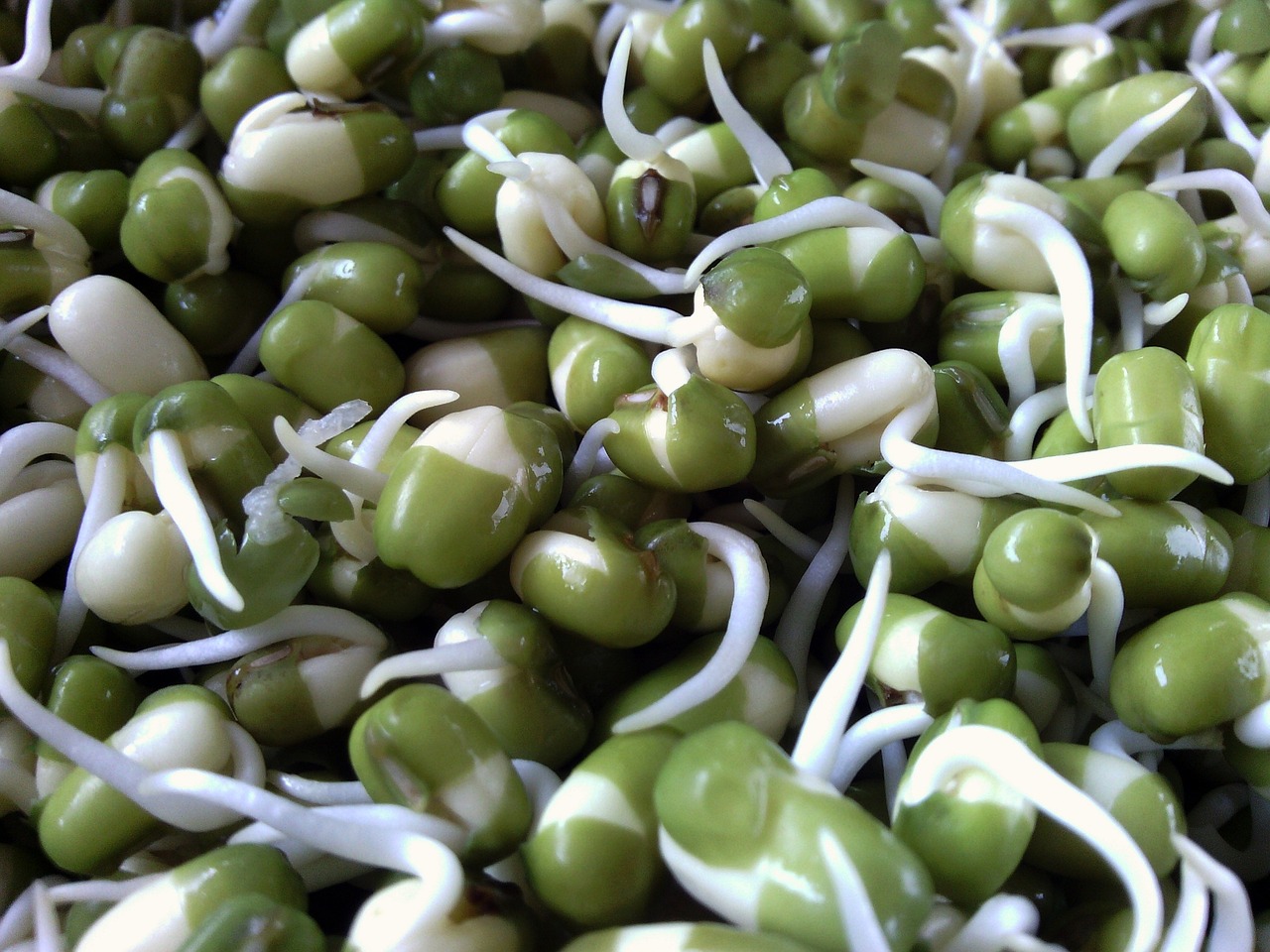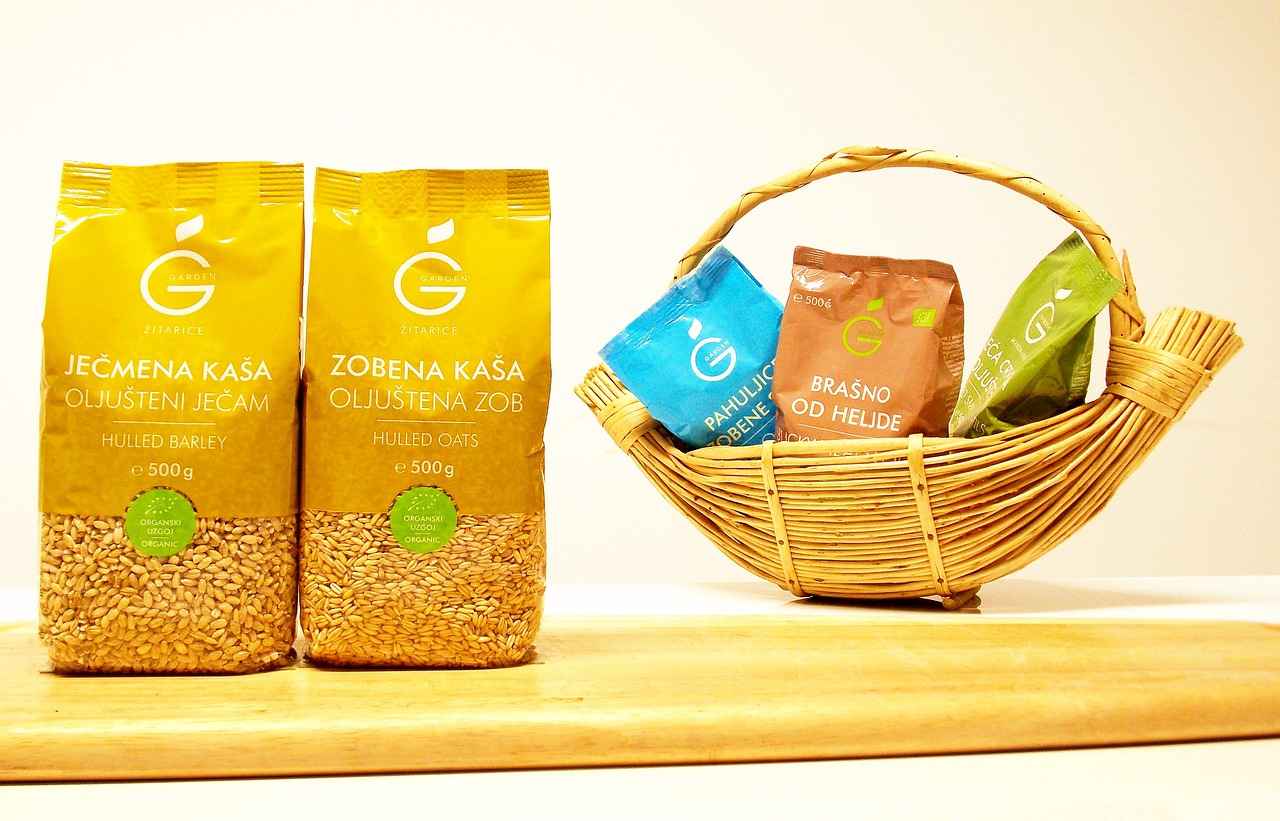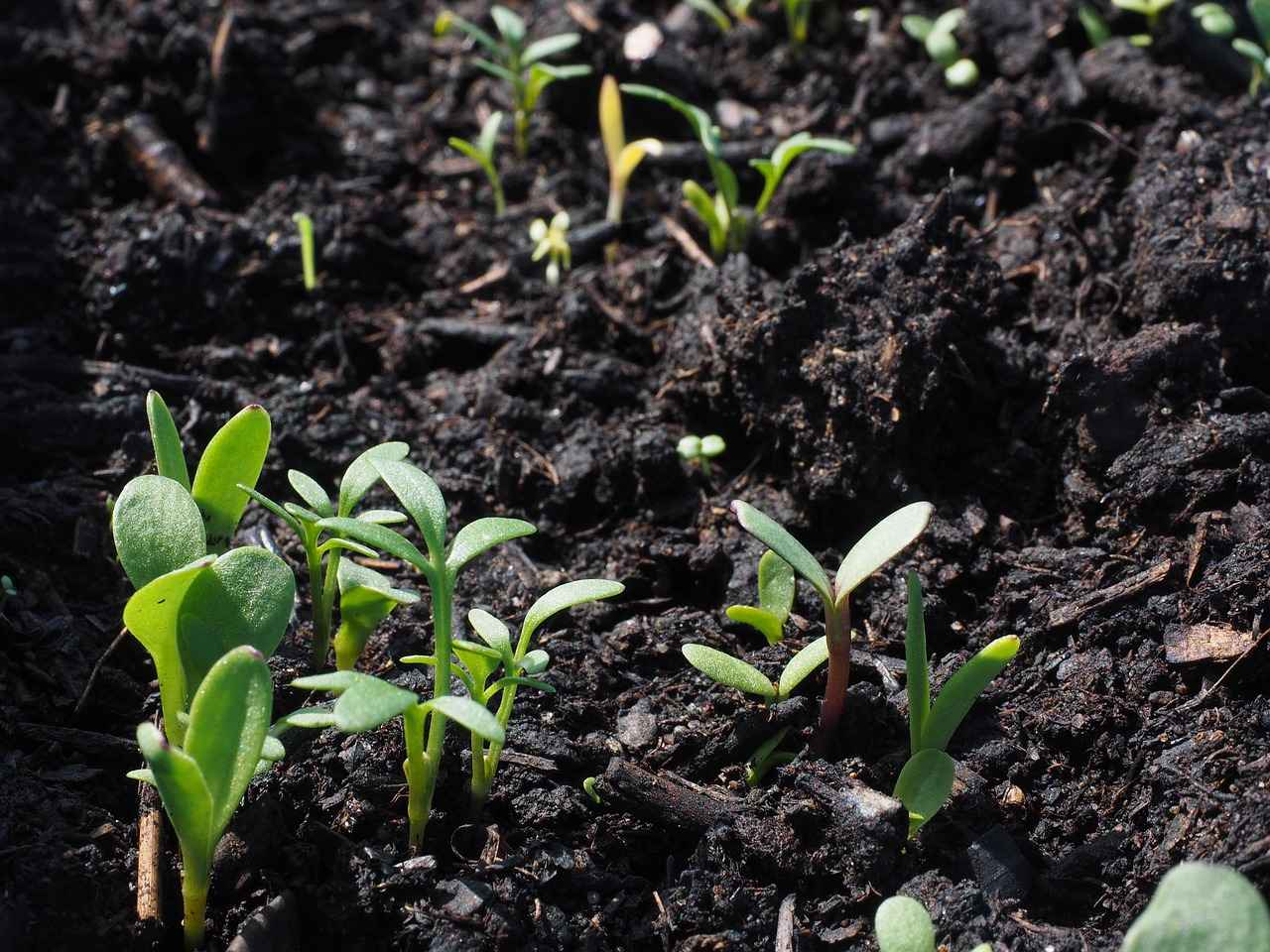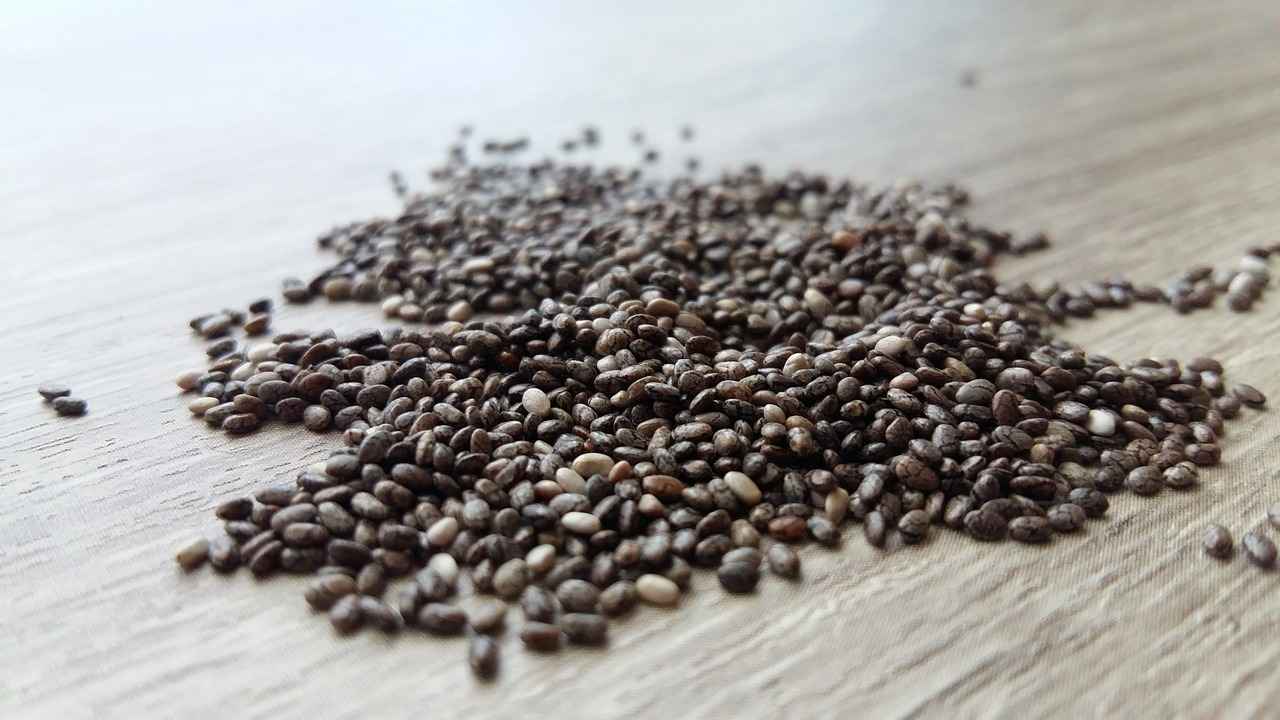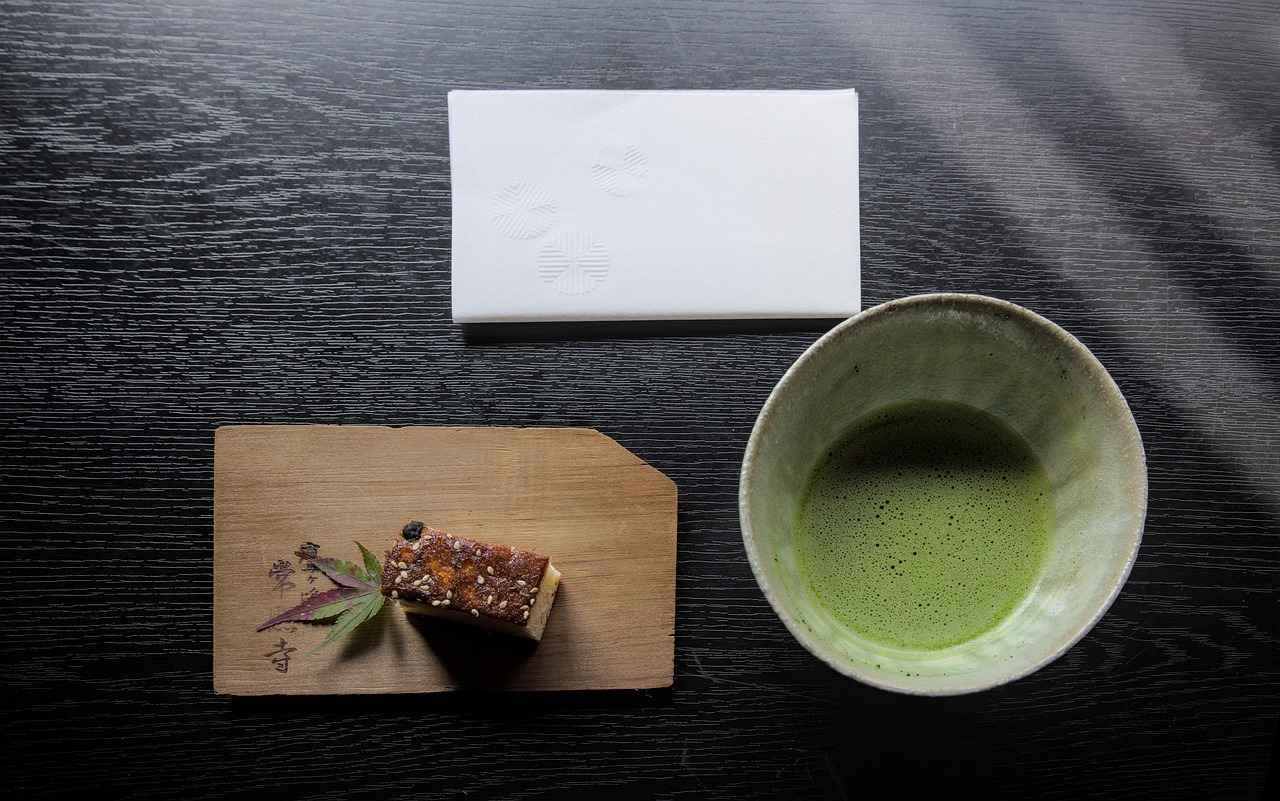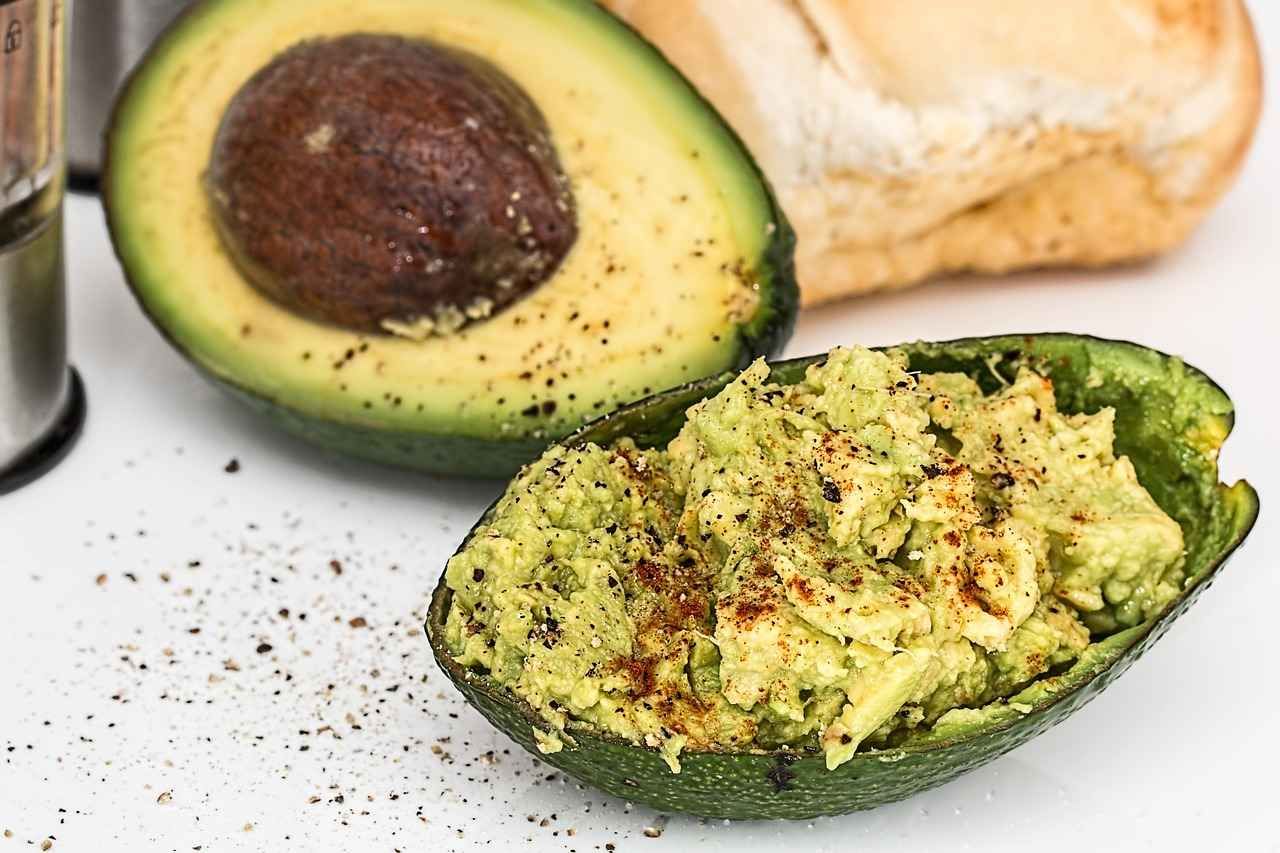This article explores the best practices for consuming chia seeds, highlighting their nutritional benefits, preparation methods, and tips for incorporating them into your diet effectively. Chia seeds, known for their tiny size yet impressive nutrient profile, have gained popularity as a health food. Understanding how to consume them properly can significantly enhance their benefits.
What Are Chia Seeds and Their Nutritional Benefits?
Chia seeds are small, oval-shaped seeds derived from the Salvia hispanica plant. These seeds are nutrient-dense, containing high levels of fiber, protein, and omega-3 fatty acids. A single ounce (28 grams) of chia seeds provides approximately:
| Nutrient | Amount (per ounce) |
|---|---|
| Calories | 137 |
| Fiber | 11 grams |
| Protein | 4 grams |
| Omega-3 Fatty Acids | 5 grams |
These nutrients contribute to various health benefits, including improved digestion, heart health, and weight management.
How to Prepare Chia Seeds for Consumption?
Preparation methods can significantly influence the digestibility and nutrient absorption of chia seeds. Here are some effective ways to prepare them:
- Soaking: Soaking chia seeds in water or milk for at least 30 minutes allows them to expand and form a gel-like consistency, enhancing their digestibility.
- Mixing: You can mix chia seeds into smoothies, yogurt, or oatmeal for added texture and nutrition.
- Baking: Incorporate chia seeds into baked goods like muffins or bread for a nutritional boost.
Soaking Chia Seeds: Why It’s Important?
Soaking chia seeds before consumption is crucial as it enhances their digestibility and nutrient absorption. The soaking process allows the seeds to absorb liquid, making them easier to digest and providing a more satisfying texture.
Best Soaking Techniques for Chia Seeds
There are various soaking techniques you can use:
- Basic Soaking: Combine 1 part chia seeds with 4 parts water or liquid and let sit for 30 minutes.
- Overnight Soaking: For a thicker consistency, soak chia seeds overnight in the refrigerator.
How Long Should You Soak Chia Seeds?
The ideal soaking time for chia seeds is between 30 minutes to overnight, depending on your texture preference. Longer soaking times can lead to a thicker gel.
Can You Eat Chia Seeds Raw?
Yes, you can consume raw chia seeds, but it’s essential to drink plenty of water to aid digestion. Raw seeds can be sprinkled on salads or added to smoothies.
What Are the Best Ways to Incorporate Chia Seeds into Your Diet?
Integrating chia seeds into your meals can be simple and delicious. Here are some ideas:
- Chia Seed Smoothies: Blend chia seeds into your favorite smoothie recipe for a nutrient boost.
- Chia Seed Puddings: Combine chia seeds with milk and sweetener to create a tasty pudding.
- Sprinkling on Dishes: Add chia seeds to salads or soups for added crunch and nutrition.
How Much Chia Seeds Should You Consume Daily?
The recommended daily intake of chia seeds is about 1-2 tablespoons (15-30 grams). This amount provides significant health benefits without causing digestive discomfort.
Are There Any Side Effects of Consuming Chia Seeds?
While chia seeds are generally safe for most people, consuming them in excess can lead to digestive issues. It’s essential to introduce them gradually into your diet.
Can Chia Seeds Help with Weight Loss?
Chia seeds are often associated with weight loss due to their high fiber content, which promotes feelings of fullness. Incorporating them into meals can help manage appetite effectively.
How Do Chia Seeds Affect Satiety?
Chia seeds absorb water and expand in the stomach, which can increase feelings of fullness and reduce overall calorie intake.
Are Chia Seeds Safe for Everyone?
Chia seeds are generally safe, but individuals with certain allergies or medical conditions should consult a healthcare provider before adding them to their diet.
Chia Seeds and Allergies: What You Need to Know
Allergic reactions to chia seeds are rare, but it’s essential to be aware of the signs, such as rash or gastrointestinal discomfort, and seek medical advice if necessary.
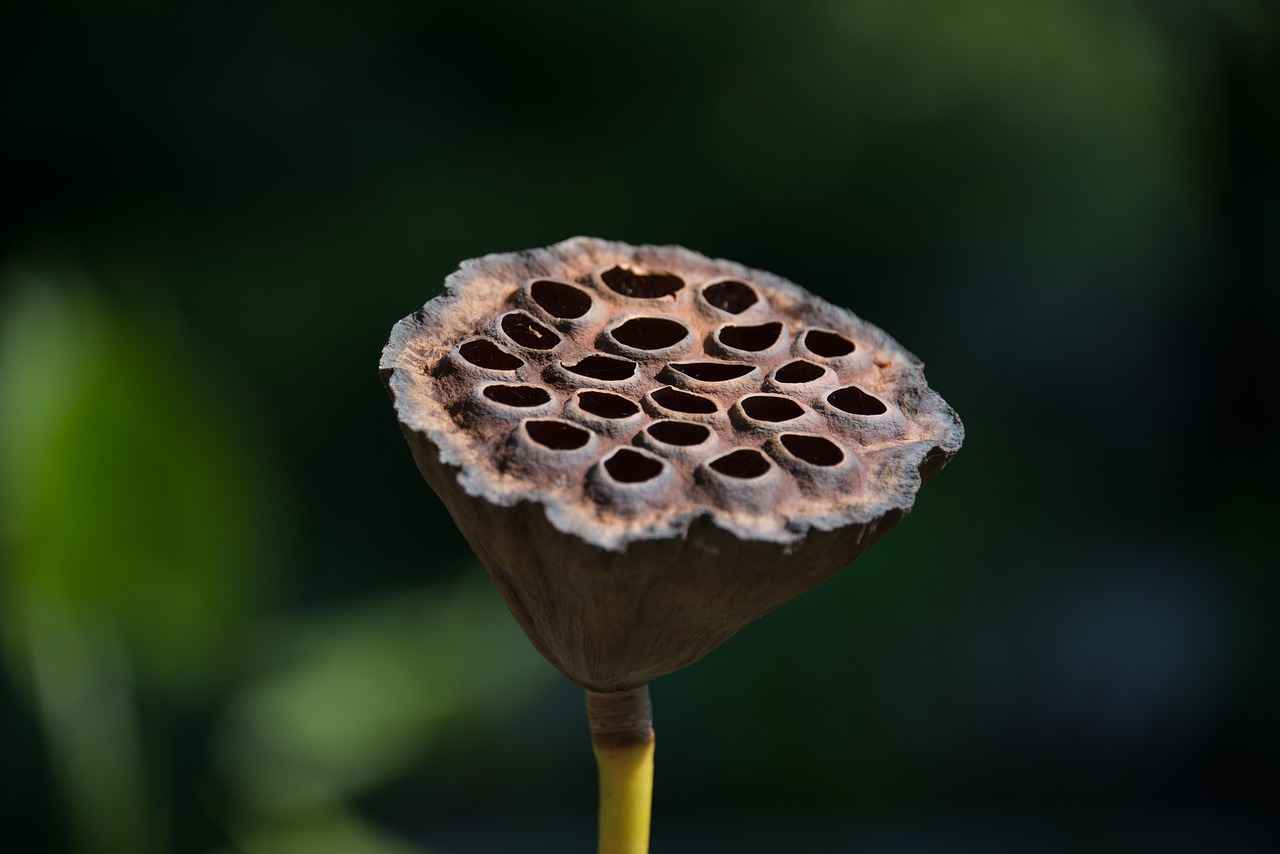
What Are Chia Seeds and Their Nutritional Benefits?
Chia seeds are small, black or white seeds derived from the Salvia hispanica plant, native to Central America. These tiny seeds have gained immense popularity over the years due to their remarkable nutritional profile and health benefits. Packed with essential nutrients, chia seeds are a powerhouse of fiber, protein, and omega-3 fatty acids, making them a fantastic addition to any diet.
The nutritional benefits of chia seeds are extensive. They are particularly high in dietary fiber, with about 10 grams of fiber per ounce. This high fiber content aids in digestion, promotes a feeling of fullness, and can help regulate blood sugar levels. The soluble fiber in chia seeds absorbs water, forming a gel-like substance that can slow down the absorption of food, contributing to sustained energy levels.
In addition to fiber, chia seeds are an excellent source of plant-based protein. With approximately 4 grams of protein per ounce, they provide essential amino acids that are necessary for muscle repair and growth. This makes them an ideal choice for vegetarians and vegans looking to boost their protein intake.
Another significant aspect of chia seeds is their high content of omega-3 fatty acids, particularly alpha-linolenic acid (ALA). Omega-3 fatty acids are known for their heart health benefits, including reducing inflammation and lowering the risk of heart disease. Consuming chia seeds can help increase your omega-3 intake, especially for those who do not eat fish.
Chia seeds are also rich in various vitamins and minerals, including calcium, magnesium, phosphorus, and antioxidants. These nutrients support bone health, enhance metabolic functions, and protect the body from oxidative stress.
To truly maximize the health benefits of chia seeds, it is essential to understand how to incorporate them into your daily diet effectively. They can be consumed in various forms, such as:
- Soaked in water or milk to create a gel-like consistency.
- Sprinkled on salads or mixed into yogurt for added texture.
- Blended into smoothies for a nutrient boost.
- Used as an egg substitute in baking by mixing chia seeds with water.
In summary, chia seeds are not just a trendy superfood; they are a nutrient-dense addition to your diet that can provide numerous health benefits. By understanding their nutritional profile and finding creative ways to incorporate them into your meals, you can harness their full potential for better health and well-being.
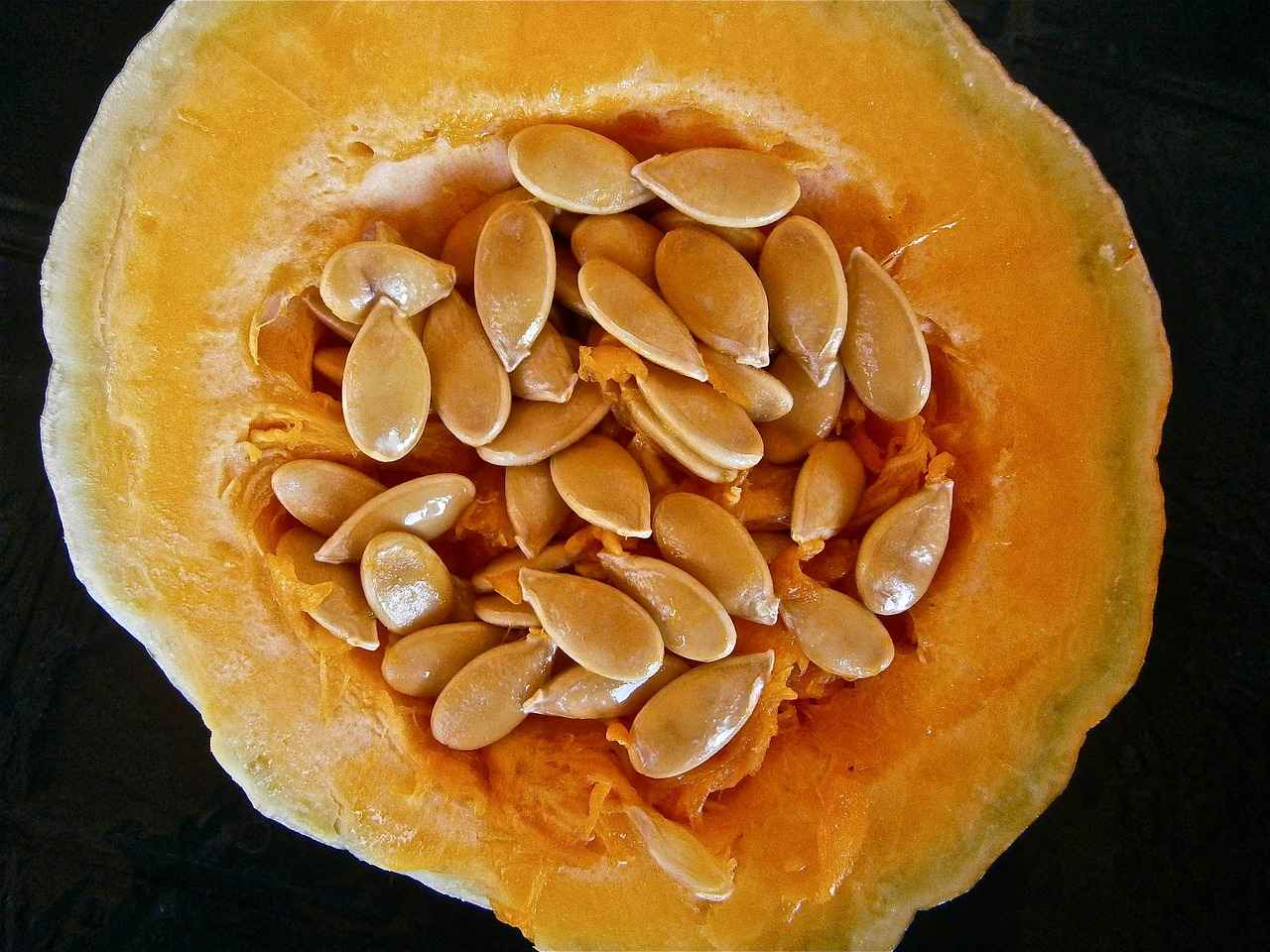
How to Prepare Chia Seeds for Consumption?
Preparation methods can significantly influence the digestibility and nutrient absorption of chia seeds. Understanding how to prepare these tiny, nutrient-packed seeds is essential for maximizing their health benefits. In this section, we will explore the best ways to prepare chia seeds for optimal consumption.
Chia seeds are rich in fiber, protein, and omega-3 fatty acids, but their health benefits can be enhanced through proper preparation. When consumed without adequate preparation, chia seeds may not be fully digestible, leading to missed nutritional opportunities.
Soaking chia seeds is one of the most effective methods to enhance their digestibility. When soaked, chia seeds absorb water and expand, forming a gel-like consistency. This process not only helps in breaking down the seeds but also makes nutrients more bioavailable.
- Basic Soaking Method: Combine 1 part chia seeds with 4 parts water. Stir well and let it sit for at least 30 minutes.
- Overnight Soaking: For best results, soak chia seeds overnight in the refrigerator. This allows for maximum absorption and optimal texture.
The duration of soaking can affect both the texture and nutrient availability. Ideally, chia seeds should be soaked for at least 30 minutes, but soaking them overnight is recommended for a smoother consistency and better nutrient absorption.
Yes, you can consume chia seeds raw. However, it is important to note that eating them dry may lead to digestive discomfort, as they can absorb water from the digestive tract. To enjoy raw chia seeds safely, consider adding them to foods with high moisture content, such as smoothies or yogurt.
Chia seeds can be added to a variety of dishes. Here are some popular ways to enjoy them:
- Chia Seed Smoothies: Blend chia seeds into your favorite smoothies for an extra nutrient boost.
- Chia Seed Puddings: Mix chia seeds with milk or plant-based alternatives and let them sit until they thicken.
- Baking: Incorporate chia seeds into baked goods like muffins and bread for added nutrition.
The recommended daily intake of chia seeds is about 1 to 2 tablespoons. This amount provides a good balance of nutrients without overwhelming your digestive system. Be sure to increase your intake gradually to allow your body to adjust.
While chia seeds are generally safe for most people, consuming them in excessive amounts can lead to digestive issues due to their high fiber content. It’s important to drink plenty of water when incorporating chia seeds into your diet to help manage their fiber effects.
By understanding the best preparation methods for chia seeds, you can significantly enhance their nutritional benefits and enjoy them as a versatile addition to your meals.
Soaking Chia Seeds: Why It’s Important?
Soaking chia seeds before consumption is a practice that many health enthusiasts endorse. This method not only enhances their digestibility but also improves nutrient absorption, making it a vital step for those looking to maximize the benefits of these tiny yet powerful seeds. But what exactly happens when you soak chia seeds, and why is it considered important?
Chia seeds are rich in fiber, protein, and omega-3 fatty acids, but they also contain a natural coating that can make them difficult to digest when consumed dry. Soaking chia seeds activates their gelatinous properties, allowing them to absorb water and expand. This process not only helps break down the seed’s outer layer but also makes nutrients more bioavailable, meaning your body can absorb them more effectively.
- Enhanced Digestibility: Soaking softens the seeds, making them easier for your body to digest.
- Improved Nutrient Absorption: The process allows for better absorption of essential nutrients.
- Hydration: Soaked chia seeds can help keep you hydrated, as they hold onto water.
- Texture Improvement: The gel-like consistency can make chia seeds more palatable in various dishes.
To soak chia seeds, simply follow these steps:
1. Measure out the desired amount of chia seeds.2. Combine the seeds with water in a ratio of 1:6 (1 part chia seeds to 6 parts water).3. Stir well to prevent clumping.4. Let the mixture sit for at least 30 minutes, or overnight for best results.
This soaking method not only enhances the seeds’ benefits but also allows for a versatile ingredient that can be added to smoothies, puddings, or baked goods.
The soaking time can vary based on personal preference. While a minimum of 30 minutes is recommended, soaking overnight yields a thicker gel that can be used in various recipes. However, it’s important to note that soaking for too long may result in a less desirable texture.
Yes, you can consume raw chia seeds, but they may not provide the same benefits as soaked seeds. Eating them dry can lead to digestive discomfort as they absorb moisture in the digestive tract. Therefore, soaking is generally recommended for optimal health benefits.
Once soaked, chia seeds can be easily added to a variety of dishes:
- Smoothies: Blend them into your favorite smoothies for added nutrition.
- Puddings: Create delicious chia seed puddings by mixing with milk or plant-based alternatives.
- Baked Goods: Incorporate soaked chia seeds into muffins or breads for a nutritious boost.
In conclusion, soaking chia seeds is a simple yet effective method to enhance their health benefits. By improving digestibility and nutrient absorption, soaking not only makes chia seeds a more beneficial addition to your diet but also opens up a world of culinary possibilities.
Best Soaking Techniques for Chia Seeds
Soaking chia seeds is an essential preparation method that enhances their nutritional benefits. By absorbing water, chia seeds swell and form a gel-like consistency, making them easier to digest and increasing their nutrient bioavailability. Here, we will explore various soaking techniques that can yield different results, ensuring you get the maximum benefit from these tiny powerhouses.
- Basic Soaking Method: The simplest method involves mixing chia seeds with water in a ratio of 1:10. For instance, one tablespoon of chia seeds should be soaked in about 10 tablespoons of water. Let the mixture sit for at least 30 minutes, or preferably overnight, in the refrigerator. This method allows the seeds to absorb the water fully and expand, creating a gel that can be easily added to smoothies, puddings, or oatmeal.
- Quick Soaking Technique: If you’re short on time, a quick soak is possible. Combine chia seeds with hot water in the same 1:10 ratio and let them sit for about 10-15 minutes. The heat accelerates the absorption process, although the texture may not be as smooth as the overnight method.
- Flavor-Infused Soaking: For an added twist, consider soaking chia seeds in flavored liquids such as almond milk, coconut water, or fruit juices. This method not only hydrates the seeds but also infuses them with additional nutrients and flavors, making them a delicious addition to your dishes.
- Soaking with Other Ingredients: Combine chia seeds with other ingredients like yogurt or smoothies during the soaking process. This way, you create a nutrient-dense meal or snack right from the start. Simply blend your ingredients and let the chia seeds soak in the mixture for about 30 minutes to an hour.
Each soaking technique offers unique benefits, and the choice may depend on your personal preferences and dietary needs. For example, the basic soaking method is ideal for those who want a straightforward approach, while flavor-infused soaking can elevate your meals.
Regardless of the method you choose, it’s important to remember that chia seeds can absorb up to 12 times their weight in water. This property not only aids in hydration but also promotes feelings of fullness, making them a popular choice for those looking to manage their weight.
Experimenting with different soaking techniques can help you discover the best way to incorporate chia seeds into your diet while maximizing their health benefits. Whether you prefer a quick soak or a more elaborate flavor-infused method, chia seeds can easily fit into various meals and snacks, enriching your overall nutrition.
How Long Should You Soak Chia Seeds?
Chia seeds have gained immense popularity due to their impressive nutritional profile and versatility in various dishes. However, many people overlook a crucial aspect of their preparation: soaking. This question is essential for maximizing the benefits these tiny seeds can offer.
Soaking chia seeds is not just a matter of preference; it significantly affects their texture and nutrient availability. When soaked, chia seeds absorb water and expand, forming a gel-like consistency that enhances their digestibility. This process also helps release nutrients, making them more accessible for absorption in the body.
The ideal soaking time varies depending on the desired outcome. Generally, soaking chia seeds for 20 to 30 minutes is sufficient for most recipes. This duration allows the seeds to absorb enough water, achieving the right texture without becoming overly gelatinous.
While soaking chia seeds for a short period yields optimal results, soaking them for too long can lead to an undesirable texture. If left to soak for several hours or overnight, chia seeds may become excessively thick and clumpy, which might not be suitable for all dishes. Therefore, it’s crucial to monitor soaking times closely.
- Improved Digestibility: Soaking helps break down the outer shell, making it easier for your body to digest and absorb the nutrients.
- Enhanced Nutrient Absorption: The soaking process activates enzymes that aid in nutrient absorption, allowing your body to fully utilize the benefits of omega-3 fatty acids, fiber, and proteins.
- Better Texture: Properly soaked chia seeds have a pleasant, pudding-like consistency that can enhance the texture of smoothies, puddings, and baked goods.
To soak chia seeds effectively, follow these simple steps:
1. Measure the desired amount of chia seeds (typically 1-2 tablespoons per serving).2. Combine the chia seeds with water in a bowl or jar, using a ratio of 1:4 (1 part seeds to 4 parts water).3. Stir well to prevent clumping.4. Let the mixture sit for 20-30 minutes, stirring occasionally.5. Once the seeds have absorbed the water and formed a gel, they are ready to use in your recipes.
Soaking chia seeds overnight is perfectly fine, but it’s essential to adjust the water ratio. If you plan to soak them for an extended period, consider using a higher water-to-seed ratio to prevent them from becoming too thick. This method is particularly useful for preparing chia seed puddings or smoothies in advance.
In conclusion, the duration of soaking chia seeds can significantly influence their texture and nutritional benefits. By following the recommended soaking times and techniques, you can maximize the health benefits of chia seeds while enjoying their unique texture in your meals. Whether you choose to soak them for a quick smoothie or overnight for a pudding, understanding the soaking process is key to incorporating chia seeds into your diet effectively.
Can You Eat Chia Seeds Raw?
Chia seeds have gained popularity as a superfood due to their impressive nutritional profile. However, many people wonder about the safety and benefits of consuming them in their raw form. This article delves into the question: and explores the implications for digestion and nutrient absorption.
Chia seeds are tiny, black or white seeds derived from the Salvia hispanica plant. They are rich in fiber, protein, and omega-3 fatty acids, making them a valuable addition to any diet. While consuming them raw is indeed possible, it is essential to consider how they interact with your digestive system.
When eaten raw, chia seeds can absorb up to 12 times their weight in water. This unique property can lead to gastrointestinal discomfort if not consumed properly. Without adequate hydration, raw chia seeds may expand in your stomach, potentially causing bloating or discomfort. Therefore, it is crucial to ensure you drink plenty of water when consuming them in their raw state.
- Start Small: If you are new to chia seeds, begin with a small amount, such as one teaspoon, and gradually increase your intake.
- Hydrate: Always drink water or other liquids when consuming raw chia seeds to aid in digestion.
- Mix with Other Foods: Combine raw chia seeds with yogurt, smoothies, or oatmeal to enhance digestibility and flavor.
Despite the precautions, raw chia seeds can offer numerous health benefits. They are a fantastic source of antioxidants, which help combat oxidative stress in the body. Additionally, their high fiber content can promote satiety, making them a useful addition to weight management strategies.
While raw chia seeds are generally safe for most people, there are some considerations to keep in mind:
- Digestive Issues: As mentioned earlier, consuming them without adequate hydration can lead to discomfort.
- Allergic Reactions: Though rare, some individuals may experience an allergic reaction to chia seeds. Symptoms can include itching, hives, or gastrointestinal distress.
In summary, yes, you can eat chia seeds raw, but it is vital to understand their effects on digestion and nutrient absorption. By following the tips outlined above, you can safely incorporate raw chia seeds into your diet and enjoy their numerous health benefits. Whether you choose to consume them raw or prepared, chia seeds can be a valuable addition to a balanced diet.

What Are the Best Ways to Incorporate Chia Seeds into Your Diet?
Integrating chia seeds into your meals can be both easy and delicious. These tiny seeds are not only packed with nutrients but also versatile in their use. Below are various methods to seamlessly add chia seeds to your daily diet, ensuring you reap their maximum benefits.
- Chia Seed Smoothies: One of the simplest ways to enjoy chia seeds is by adding them to your smoothies. They blend well and provide a nutrient boost. For a delicious smoothie, combine spinach, banana, and almond milk with a tablespoon of chia seeds. This combination not only enhances flavor but also increases fiber and protein content.
- Chia Seed Puddings: Chia pudding is a popular and nutritious dessert option. To prepare, mix three tablespoons of chia seeds with one cup of your favorite milk (dairy or plant-based) and let it sit in the fridge overnight. You can customize your pudding with flavors like vanilla, cocoa, or fruit for a tasty treat that also serves as a healthy breakfast.
- In Baking: Chia seeds can be incorporated into baked goods, such as muffins or bread. They add a pleasant crunch and boost the nutritional profile. Replace a portion of the flour in your recipes with ground chia seeds or sprinkle them on top of your batter before baking.
- As a Topping: Sprinkle chia seeds on salads, yogurt, or oatmeal for added texture and nutrition. They not only enhance the visual appeal of your dishes but also contribute to a feeling of fullness, making them a great addition to meals.
- Chia Seed Gel: To create a chia gel, mix one part chia seeds with six parts water and let it sit for about 30 minutes. This gel can be used as a thickening agent in smoothies, soups, or sauces, providing a nutrient-dense alternative to traditional thickeners.
Incorporating chia seeds into your meals doesn’t have to be complicated. By using these methods, you can enjoy their health benefits while enhancing the flavors and textures of your favorite dishes. Whether you prefer them in smoothies, puddings, or as toppings, chia seeds offer a versatile and nutritious addition to any diet.
Remember to start with small amounts if you are new to chia seeds, and gradually increase your intake to allow your digestive system to adjust. With these tips, you can easily make chia seeds a regular part of your healthy eating routine.
Chia Seed Smoothies: A Nutrient Boost
Chia Seed Smoothies: A Nutrient Boost
Smoothies have become a popular choice for health enthusiasts looking to pack nutrients into a delicious drink. One of the best ways to enhance your smoothie is by adding chia seeds. These tiny seeds are not only versatile but also incredibly nutritious, making them an ideal addition to your daily diet.
Chia seeds are a powerhouse of nutrients. They are rich in fiber, which aids in digestion and promotes a feeling of fullness. Additionally, they are an excellent source of omega-3 fatty acids, which are essential for heart health. By incorporating chia seeds into your smoothies, you can significantly boost the nutritional value of your drink.
Preparing a chia seed smoothie is simple and quick. Here are some steps to ensure you get the most out of your ingredients:
- Choose Your Base: Start with a liquid base such as almond milk, coconut water, or yogurt.
- Add Fruits and Vegetables: Incorporate a variety of fruits like bananas, berries, or spinach for added flavor and nutrients.
- Include Chia Seeds: Add 1-2 tablespoons of chia seeds for a nutrient boost.
- Blend: Mix all ingredients until smooth. If you prefer a thicker consistency, allow the smoothie to sit for a few minutes to let the chia seeds expand.
Here are a few tasty recipes to get you started:
| Recipe Name | Ingredients | Instructions |
|---|---|---|
| Berry Chia Smoothie | 1 cup mixed berries, 1 cup almond milk, 2 tbsp chia seeds | Blend all ingredients until smooth. Enjoy! |
| Green Chia Smoothie | 1 banana, 1 cup spinach, 1 cup coconut water, 2 tbsp chia seeds | Blend until smooth. Serve chilled. |
| Chocolate Chia Smoothie | 1 banana, 1 cup almond milk, 2 tbsp cocoa powder, 2 tbsp chia seeds | Blend all ingredients until creamy. Indulge! |
To maximize the benefits of your chia seed smoothies, consider the following tips:
- Soak Chia Seeds: Soaking chia seeds in water or your smoothie base for 10-15 minutes before blending can enhance their digestibility.
- Experiment with Flavors: Don’t hesitate to try different combinations of fruits and vegetables to find what you love.
- Balance Your Ingredients: Ensure you have a good mix of carbohydrates, proteins, and healthy fats for a well-rounded smoothie.
Incorporating chia seeds into your smoothies is a delicious way to enhance your overall health. With numerous recipes and preparation methods available, you can easily find a combination that suits your taste buds while reaping the nutritional benefits. Enjoy experimenting with different flavors and enjoy the health boost that comes with every sip!
Chia Seed Puddings: A Tasty Treat
Chia seed puddings are rapidly gaining popularity as a nutritious dessert option that not only satisfies your sweet tooth but also provides a wealth of health benefits. These puddings are incredibly versatile and can be customized to suit various flavors and dietary preferences. In this article, we will delve into how to make chia seed puddings, explore different flavor combinations, and offer tips for enhancing their nutritional value.
Chia seeds are rich in omega-3 fatty acids, fiber, protein, and various essential minerals. When combined with a liquid, they expand and form a gel-like consistency, which creates a satisfying texture in puddings. This gel-like property not only adds to the pudding’s creaminess but also helps to keep you feeling full for longer, making chia seed puddings an excellent choice for those looking to manage their weight.
Creating a basic chia seed pudding is simple and requires minimal ingredients. Here’s a straightforward recipe:
- Ingredients:
- 1/4 cup chia seeds
- 1 cup milk (dairy or plant-based)
- 1-2 tablespoons sweetener (honey, maple syrup, or agave)
- 1 teaspoon vanilla extract (optional)
- Instructions:
- In a bowl, mix the chia seeds, milk, sweetener, and vanilla extract.
- Stir well to prevent clumping.
- Let the mixture sit for about 5 minutes, then stir again.
- Cover and refrigerate for at least 2 hours or overnight.
- Serve chilled, topped with your favorite fruits or nuts.
The beauty of chia seed puddings lies in their customizability. Here are some ideas to enhance your pudding:
- Fruits: Add fresh or frozen fruits like berries, bananas, or mangoes for added flavor and nutrients.
- Spices: Incorporate spices like cinnamon, nutmeg, or cocoa powder to create different flavor profiles.
- Nuts and Seeds: Top your pudding with chopped nuts or seeds for a crunchy texture and extra protein.
- Nut Butters: Swirling in almond or peanut butter can add creaminess and a rich flavor.
To ensure your chia seed pudding turns out perfectly every time, consider the following tips:
- Use a whisk or a blender to mix the ingredients thoroughly, preventing clumps of chia seeds.
- Experiment with different liquids such as coconut milk, almond milk, or even fruit juice to find your favorite base.
- Adjust the sweetness according to your taste and dietary needs.
Chia seed puddings are generally safe for most people, but those with specific dietary restrictions or allergies should consult a healthcare provider. Additionally, it’s essential to consume them in moderation, especially for individuals who are not used to high-fiber foods.
In summary, chia seed puddings are a delicious and healthy treat that can be easily prepared and customized. With their numerous health benefits and endless flavor possibilities, they make for a perfect dessert or snack option. So why not try making your own chia seed pudding today?
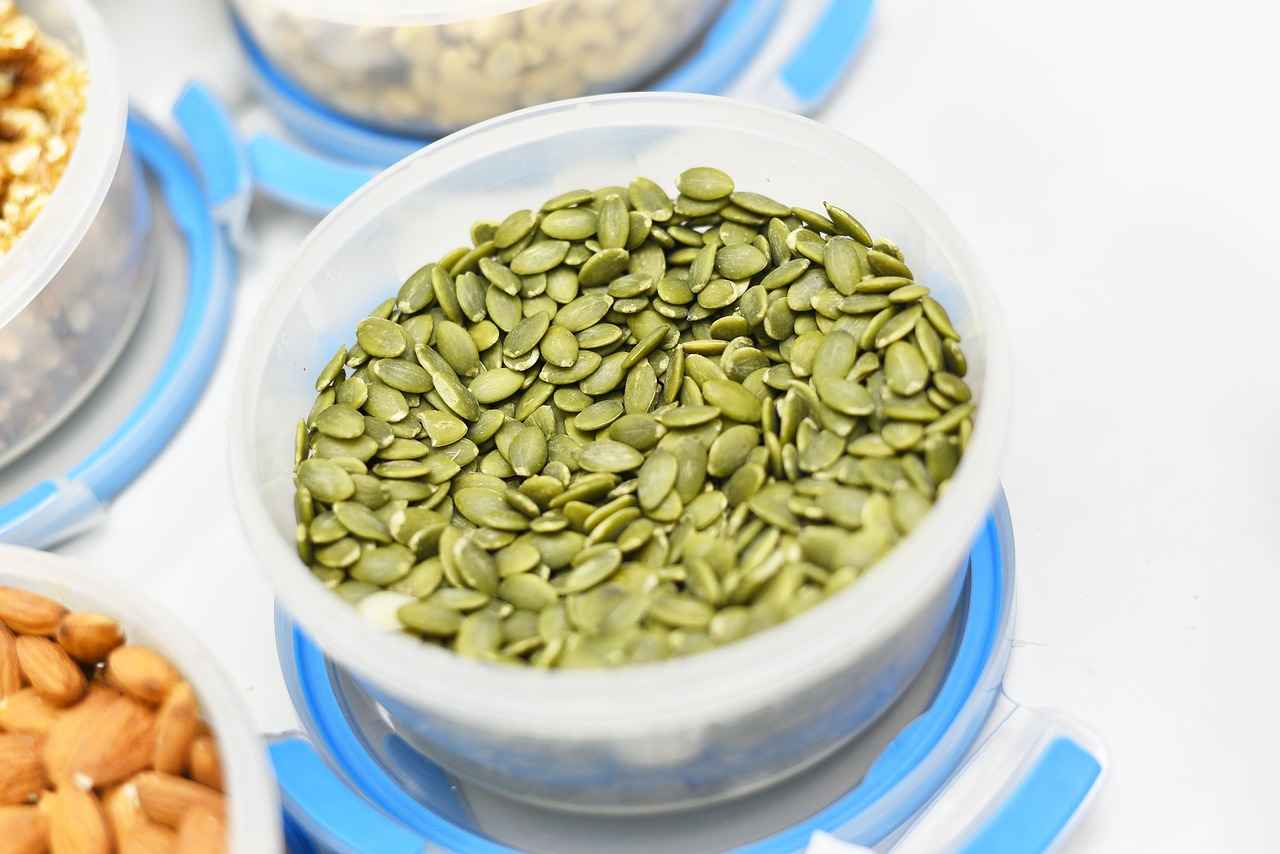
How Much Chia Seeds Should You Consume Daily?
Understanding the right amount of chia seeds to consume daily is essential for maximizing their health benefits while avoiding potential side effects. Chia seeds are rich in fiber, protein, and omega-3 fatty acids, making them a nutritious addition to any diet. However, the question remains:
The general recommendation for chia seed consumption is about 1 to 2 tablespoons (approximately 15 to 30 grams) per day. This amount provides a wealth of nutrients without overwhelming your digestive system. It’s important to note that individual needs may vary based on factors such as age, activity level, and overall dietary habits.
When determining your ideal chia seed intake, consider the following factors:
- Dietary Goals: If you’re aiming for weight loss, a smaller serving may be beneficial to help control calorie intake.
- Activity Level: Active individuals may require more energy and nutrients, warranting a higher intake of chia seeds.
- Overall Diet: If your diet is already high in fiber, you may want to limit chia seed consumption to avoid digestive discomfort.
Consuming chia seeds in moderation is crucial for several reasons:
- Digestive Health: Chia seeds are high in fiber, which can lead to bloating or discomfort if consumed in excessive amounts.
- Nutrient Absorption: The body may struggle to absorb nutrients if overwhelmed with too many seeds at once.
- Hydration Needs: Chia seeds absorb a significant amount of water, so adequate hydration is necessary when increasing your intake.
There are numerous ways to add chia seeds to your diet:
- Smoothies: Blend them into your favorite smoothies for a nutrient boost.
- Oatmeal: Stir chia seeds into your morning oatmeal for added texture and nutrition.
- Baking: Incorporate chia seeds into baked goods, such as muffins or bread, for enhanced fiber content.
As with any dietary change, it’s essential to listen to your body. If you experience any discomfort or adverse effects after consuming chia seeds, consider adjusting your intake. Consulting with a healthcare professional or a registered dietitian can provide personalized guidance based on your unique health needs.
In summary, the right daily intake of chia seeds typically ranges from 1 to 2 tablespoons. Adjust your consumption based on your dietary goals, activity level, and overall health. By understanding the importance of moderation and proper preparation, you can enjoy the numerous benefits of chia seeds while minimizing any potential side effects.
Are There Any Side Effects of Consuming Chia Seeds?
Chia seeds have garnered significant attention for their remarkable health benefits, including high levels of omega-3 fatty acids, fiber, and protein. However, like any food, they can have side effects if not consumed properly. Understanding the potential risks associated with chia seeds is crucial for maximizing their benefits while minimizing adverse effects.
While chia seeds are generally safe for most individuals, there are some side effects to consider:
- Digestive Issues: Due to their high fiber content, consuming chia seeds without adequate hydration can lead to bloating, gas, or constipation. It’s essential to drink plenty of water when incorporating them into your diet.
- Allergic Reactions: Although rare, some people may experience allergic reactions to chia seeds. Symptoms can include skin rashes, itching, or gastrointestinal distress. If you suspect an allergy, it’s best to consult a healthcare professional.
- Interference with Medications: Chia seeds can affect blood sugar levels and blood pressure. Individuals on medications for diabetes or hypertension should monitor their intake and consult their doctor to avoid potential interactions.
- Choking Hazard: Chia seeds can expand significantly when soaked in liquid. Consuming them dry or without proper hydration can pose a choking risk, particularly for those with swallowing difficulties.
To enjoy the benefits of chia seeds while minimizing side effects, consider the following tips:
- Hydrate Properly: Always soak chia seeds in water or another liquid before consumption. This ensures they expand and become easier to digest, reducing the risk of gastrointestinal discomfort.
- Start Small: If you are new to chia seeds, begin with a small amount (about 1 teaspoon) and gradually increase your intake to allow your digestive system to adjust.
- Monitor Your Body: Pay attention to how your body reacts after consuming chia seeds. If you experience discomfort, consider reducing your intake or consulting a healthcare professional.
- Combine with Other Foods: Incorporating chia seeds into smoothies, yogurt, or oatmeal can help mitigate digestive issues by promoting better digestion alongside other nutrient-dense foods.
While chia seeds are beneficial for most people, certain groups should exercise caution:
- Individuals with Digestive Disorders: Those with conditions like irritable bowel syndrome (IBS) or inflammatory bowel disease (IBD) should consult a healthcare provider before adding chia seeds to their diet.
- Pregnant and Nursing Women: While chia seeds can be nutritious, pregnant or nursing women should consult their healthcare provider to ensure they are suitable for their specific dietary needs.
In conclusion, chia seeds can be a valuable addition to your diet, offering numerous health benefits. However, it is essential to be aware of potential side effects and take appropriate precautions to avoid them. By following the tips outlined above, you can enjoy chia seeds safely and effectively.
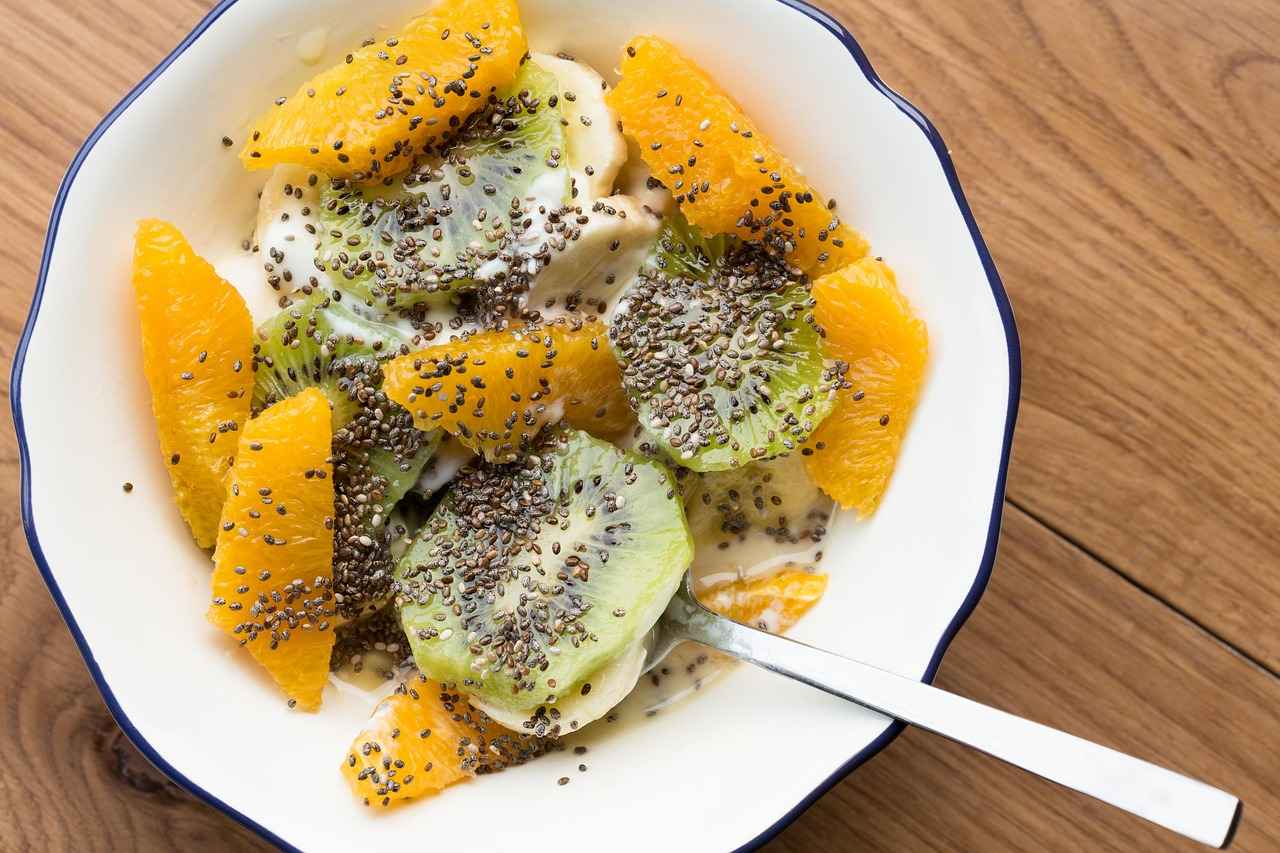
Can Chia Seeds Help with Weight Loss?
Chia seeds have gained popularity as a powerful superfood, particularly among those seeking to manage their weight. Their impressive fiber content plays a crucial role in promoting a feeling of fullness, which can help reduce overall calorie intake. In this section, we will explore how chia seeds can assist in weight management when included in a balanced diet.
One of the primary reasons chia seeds are considered beneficial for weight loss is their high fiber content. Each serving of chia seeds contains approximately 10 grams of fiber, which contributes to improved digestion and increased satiety. When consumed, chia seeds absorb water and expand in the stomach, creating a gel-like substance that can help you feel full for longer periods. This effect can potentially lead to reduced snacking and lower calorie consumption throughout the day.
Incorporating chia seeds into your meals can enhance the nutritional value of your diet. They are not only rich in fiber but also provide essential nutrients such as omega-3 fatty acids, protein, and various vitamins and minerals. By adding chia seeds to your meals, you can create a more balanced diet that supports overall health while aiding in weight management. Here are some practical ways to include chia seeds in your daily meals:
- Chia Seed Smoothies: Blend chia seeds into your favorite smoothies for added nutrition and a satisfying texture.
- Chia Puddings: Mix chia seeds with your choice of milk or yogurt and let them soak overnight for a delicious and filling breakfast or snack.
- Baking: Incorporate chia seeds into baked goods like muffins or bread for a nutritious boost.
Research suggests that the gelatinous nature of chia seeds may help curb hunger. When chia seeds are soaked in liquid, they can absorb up to 12 times their weight in water, creating a feeling of fullness that can last for hours. This property makes them an excellent addition to meals intended for weight loss. By incorporating chia seeds into your diet, you may find it easier to resist unhealthy snacks and maintain portion control.
While chia seeds offer numerous health benefits, it is essential to consume them in moderation. Overconsumption can lead to digestive discomfort, such as bloating or gas, due to their high fiber content. It is recommended to start with a small amount, such as one tablespoon per day, and gradually increase your intake as your body adjusts. Additionally, those with certain medical conditions or dietary restrictions should consult with a healthcare professional before adding chia seeds to their diet.
In conclusion, chia seeds can be a valuable addition to a weight loss plan when consumed as part of a balanced diet. Their high fiber content, ability to promote satiety, and rich nutritional profile make them an excellent choice for those looking to manage their weight effectively. By integrating chia seeds into various meals and snacks, you can enhance your overall health while working towards your weight management goals.
How Do Chia Seeds Affect Satiety?
Chia seeds have gained significant attention in recent years, particularly for their potential role in weight management. Understanding how chia seeds affect satiety can provide insights into their effectiveness as a dietary aid. These tiny seeds are not only rich in nutrients but also possess unique properties that influence feelings of fullness.
Chia seeds are primarily composed of dietary fiber, which plays a crucial role in promoting satiety. When chia seeds come into contact with liquid, they absorb up to 12 times their weight in water, forming a gel-like substance. This gel slows down the digestive process, allowing for a more gradual release of nutrients and prolonging feelings of fullness after meals.
The high fiber content in chia seeds, approximately 11 grams per ounce, not only aids in digestion but also enhances satiety. Fiber-rich foods are known to take longer to chew and digest, which can lead to a greater sense of fullness. Additionally, chia seeds contain a decent amount of protein, which is another macronutrient that contributes to feelings of satiety. Protein helps regulate hunger hormones, making it an essential component of a weight management strategy.
Research has shown that incorporating chia seeds into meals can significantly affect satiety levels. A study published in the Journal of Nutrition found that participants who consumed chia seeds reported reduced hunger and increased fullness compared to those who did not. This suggests that chia seeds can be an effective tool for those looking to manage their weight by controlling appetite.
- Chia Seed Puddings: Combine chia seeds with your favorite milk or yogurt and let them soak overnight. This not only makes a delicious snack but also maximizes their satiating properties.
- Smoothies: Add chia seeds to smoothies for an extra boost of fiber and protein, enhancing the overall filling effect of your drink.
- Sprinkling on Meals: Sprinkle chia seeds on salads, soups, or oatmeal for added texture and nutritional benefits.
While chia seeds are beneficial, moderation is key. A daily intake of 1 to 2 ounces is generally recommended to maximize their benefits without overdoing it. This amount provides sufficient fiber and protein to promote feelings of fullness while contributing to a balanced diet.
Although chia seeds are safe for most people, consuming them in excessive amounts can lead to gastrointestinal issues due to their high fiber content. It’s essential to gradually introduce chia seeds into your diet and ensure adequate fluid intake to avoid potential discomfort.
In summary, understanding how chia seeds influence feelings of fullness can significantly aid in weight management. Their unique ability to absorb water, combined with their high fiber and protein content, makes them an excellent addition to a balanced diet. By incorporating chia seeds thoughtfully into your meals, you can enhance your satiety and support your weight loss goals.

Are Chia Seeds Safe for Everyone?
Chia seeds have gained immense popularity for their numerous health benefits, but it’s essential to understand that they may not be suitable for everyone. While many can enjoy the advantages of these tiny seeds, certain individuals should exercise caution when incorporating them into their diets. This article will delve into the groups that need to be mindful of their chia seed consumption and the reasons behind this caution.
- Individuals with Swallowing Difficulties: Chia seeds can absorb up to 12 times their weight in water, forming a gel-like substance. For those with dysphagia or other swallowing issues, consuming dry chia seeds may pose a choking hazard. It is recommended to soak them before consumption to minimize this risk.
- People with Digestive Disorders: While chia seeds are rich in fiber, those with conditions like irritable bowel syndrome (IBS) or inflammatory bowel disease (IBD) may experience discomfort, such as bloating or gas, when consuming high-fiber foods. Gradual introduction and adequate hydration are crucial for these individuals.
- Pregnant and Nursing Women: Although chia seeds can be a nutritious addition to a balanced diet, pregnant and nursing women should consult their healthcare provider before adding them in significant amounts, as they may cause digestive issues or allergic reactions in sensitive individuals.
- People on Blood-Thinning Medications: Chia seeds are high in omega-3 fatty acids, which can have a blood-thinning effect. Those taking anticoagulants should be cautious and discuss their chia seed intake with their doctor to avoid potential interactions.
- Individuals with Allergies: Although rare, some people may be allergic to chia seeds. Symptoms can range from mild to severe, including hives, swelling, or even anaphylaxis. Anyone experiencing these symptoms after consuming chia seeds should seek immediate medical attention.
If you belong to one of the groups mentioned above but still wish to enjoy the benefits of chia seeds, consider the following tips:
- Start Slow: Gradually introduce chia seeds into your diet to assess your body’s response. Begin with small amounts and increase as tolerated.
- Soak Before Consumption: Soaking chia seeds in water or other liquids before eating can help reduce the risk of choking and improve digestibility.
- Consult a Healthcare Professional: If you have any concerns about how chia seeds may affect your health, especially if you have pre-existing conditions, consult with a healthcare provider or a registered dietitian.
Being aware of the symptoms of an allergy can help you respond quickly if necessary. Common signs include:
- Skin Reactions: Hives or rashes may occur in response to chia seed consumption.
- Respiratory Issues: Difficulty breathing, wheezing, or nasal congestion can indicate an allergic reaction.
- Gastrointestinal Distress: Symptoms such as nausea, vomiting, or diarrhea may also arise.
In conclusion, while chia seeds are a beneficial addition to many diets, it is crucial for certain individuals to be cautious. By understanding the potential risks and taking appropriate measures, you can safely enjoy the health benefits of chia seeds.
Chia Seeds and Allergies: What You Need to Know
Chia seeds, often celebrated for their numerous health benefits, are generally considered safe for most individuals. However, allergic reactions to chia seeds are rare, yet they can occur in some cases. Understanding the signs of a potential allergy is crucial for anyone looking to incorporate these tiny, nutrient-dense seeds into their diet.
Individuals who are allergic to chia seeds may experience various symptoms that can range from mild to severe. Common signs of an allergy include:
- Skin Reactions: Hives, rashes, or eczema may develop after consuming chia seeds.
- Gastrointestinal Issues: Symptoms such as nausea, vomiting, or diarrhea can occur.
- Respiratory Symptoms: Allergic reactions may lead to difficulty breathing, wheezing, or nasal congestion.
- Anaphylaxis: In rare cases, chia seed allergies can cause a severe, life-threatening reaction requiring immediate medical attention.
While anyone can develop an allergy to chia seeds, certain individuals may be at a higher risk. Those with existing allergies to other seeds, such as flaxseed or sesame seeds, may also be more susceptible to chia seed allergies. Additionally, individuals with a history of food allergies should approach chia seeds with caution.
If you suspect you are experiencing an allergic reaction to chia seeds, it’s essential to consult a healthcare professional. Seek immediate medical attention if you notice severe symptoms such as:
- Swelling of the face, lips, or throat
- Difficulty breathing or swallowing
- Rapid heartbeat or dizziness
Even if symptoms are mild, it’s advisable to discuss your experiences with a doctor, who may recommend allergy testing to confirm a chia seed allergy.
If you are diagnosed with a chia seed allergy, the best course of action is to avoid chia seeds and products containing them. Always read food labels carefully, as chia seeds can be hidden in various health foods and snacks. Additionally, inform friends and family about your allergy to ensure they can help you avoid potential exposure.
In summary, while chia seeds offer numerous health benefits, it is important to be aware of the potential for allergic reactions. Understanding the signs of an allergy, recognizing who is at risk, and knowing when to seek medical advice can help ensure safe consumption. If you suspect an allergy, consult a healthcare professional to discuss your symptoms and the best steps forward.
Frequently Asked Questions
- How should I prepare chia seeds for consumption?
To maximize the benefits of chia seeds, it’s best to soak them in water or your favorite liquid for at least 30 minutes. This helps them expand and become easier to digest, allowing your body to absorb their nutrients more effectively.
- Can I eat chia seeds raw?
Yes, you can eat chia seeds raw! Just remember to drink plenty of water, as they absorb liquid and can expand in your stomach. If you’re unsure, try adding them to smoothies or yogurt to make them easier on your digestion.
- How much chia seeds should I consume daily?
The recommended daily intake of chia seeds is about 1 to 2 tablespoons. This amount provides a good balance of nutrients without overwhelming your digestive system. Start small and adjust based on how your body feels!
- Are there any side effects from eating chia seeds?
While chia seeds are generally safe, consuming them in large amounts can lead to digestive issues like bloating or gas. It’s best to introduce them gradually into your diet to see how your body reacts.
- Can chia seeds help with weight loss?
Absolutely! Chia seeds are high in fiber, which can help you feel full and satisfied. When included in a balanced diet, they can be a great ally in your weight management journey.
- Are chia seeds safe for everyone?
Most people can enjoy chia seeds without any issues, but if you have a history of allergies or digestive problems, it’s wise to consult with a healthcare professional before adding them to your diet.

